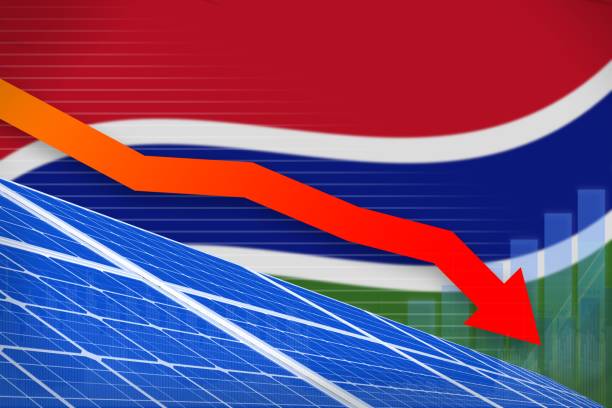
Solar energy is more affordable than ever before in the United States. Solar power deployment has reached unprecedented levels in the past five years due to the cost reduction of P.V. systems, innovative financing methods, and consumer demand.
Solar installations began to spread across a few states and in areas with primarily middle- to upper-class households. In 2013, 13 states installed solar systems totaling more than 100 Megawatts. Residential P.V. installations exceeded 2 Gigawatts. Solar is becoming more affordable in all forms as solar costs continue to drop and new business models are developed that allow for more financing.
Community Solar Projects are becoming more popular because they enable nearly half of U.S. homes that may not have a “solar-ready” roof to benefit from the sun’s power at a cheaper cost. Solar can be more affordable for low- and medium-income communities (LMI). Community solar installations have proliferated between 2010 and 2015. They reached almost 100 MW. This business model is even more promising. National Renewable Energy Laboratory estimates Community Solar could account for up to 50% of the distributed P.V. markets in 2020.
NREL’s new solar data analysis explores solar affordability using a “savings-to-investment” (SIR). This metric measures the ability to recover an investment in solar by looking at the savings on utility bills that result from solar energy produced by a solar energy system. NREL performed a simple SIR for all 50 U.S. states, assuming that U.S. Residential P.V. systems cost $3.00 to $3.50 per Watt today and last between 25 and 35 years. This scenario could make it cost-effective for homes to switch to solar power in 25 to 50 percent of states without state or local incentives.
Community solar projects tend to be larger and take advantage of bulk prices, so their installed costs are closer to commercial solar systems, which cost around $2.00 per Watt or $2.50 per Watt. Keeping everything else constant, the number of states with positive SIRs goes up to 35-48 with lower installed costs. Solar energy could be affordable for most Americans through the solar community model.
This is a fundamental analysis, but it shows that solar energy is becoming increasingly cost-effective for Americans regardless of where they reside. A recent report from the George Washington University Solar Institute found that although 49.1 million households earn less than $40,000 per year and represent 40% of U.S. homes, they account for only less than 5% of solar installations. The U.S. will be able to meet its climate targets by allowing all communities to take advantage of solar energy. This will also help create a fair solar market that allows everyone to enjoy the benefits, no matter where they live and their financial situation.
SunShot Initiative created the Solar in Your Community Challenge to take advantage of the enormous opportunity for expanding solar electricity access in LMI homes. The Challenge, which builds on the Clean Energy Savings for All Initiative announced by the White House recently, will allow the solar market expansion to a wide range of new consumers. This includes LMI households, nonprofit community-serving organizations, and LMI households. Based on the analysis of NREL’s Solar in Your Community Challenge, we are optimistic that it will lead to a solar revolution in new communities.
ABOUT THE ANALYSIS METHODOLOGY
A SIR score of 1 or higher indicates that the household will recover its investment through the utility savings generated by solar energy. The calculations of investment for residential solar systems (approximately $2.00 per Watt to $3.50 Per Watt) and more extensive systems deployed in community solar projects ($2.00 per Watt to $2.50 Per Watt) were based on the costs reported both in the NREL Benchmark Report as well as the Solar Market Insight Report. They also included the $29/kilowatt-per-year. The federal Investment Tax Credit (30%) was assumed to be available through existing financing and business models such as community solar or third-party ownership. Savings for households are also based on full net-metering credits for customers. The Energy Information Administration reports that, while a reference P.V. was assumed for all calculations, the savings were different by state based on the electricity rates in each state and the changes in those rates over time. The capacity factors of each state were also taken from the Regional Deployment System model by NREL. To capture the time value of the savings, a 3% social discount was assumed. The P.V. system’s ability to produce electrical power was degraded at 0.75% per annum. Though many other jurisdiction-specific nuances (e.g., This simple analysis did not include state, local, or utility incentives or community solar credits. However, it does show that there is a huge opportunity to reduce energy costs for households in the United States while giving them access to clean energy.
